zomba
JF-Expert Member
- Nov 27, 2007
- 17,240
- 3,910
The Unique Origins of 25 Popular Products
 Print This Post
Print This Post  Email This Post
Email This Post
 Tweet This
Tweet This
 Save Post
Save Post
 Stumble ShareThis
Stumble ShareThis
Happy accidents make good inventions. Spills, explosions, odd chemical reactions, and plain old forgetfulness produced some of todays most practical products. From saccharin to shopping carts, each of the inventions below has a strange and unique origin:
[SIZE=+3]25. Bra[/SIZE]

Image: Wikimedia
New York socialite Mary Phelps Jacob patented the modern bra as the result of an unsuitable corset. When she found her whalebone corset poking out of an evening gown before an event, Phelps used silk handkerchiefs and ribbon to build herself a primitive bra.
When friends and strangers started asking for their own bras, Phelps knew she was onto something. In 1914, she patented her Backless Brassiere, then started a business that sold it. She later sold the patent to the Warner Brothers Corset Company for $1,500; that company, in turn, earned $15 million from bras during the next three decades.
[SIZE=+3]24. Graham Cracker[/SIZE]

Image: JustinGunter
The Reverend Sylvester Graham claimed you could suppress carnal urges through diet. According to Graham, bland foods curbed sexual tendencies like masturbation. To help his followers adapt to his prescribed diet, Graham invented his namesake Graham Cracker in 1829. Hundreds of followers chowed down, paving the way for the modern, sexually unaffected graham cracker consumer.
[SIZE=+3]23. Microwave Oven[/SIZE]

In 1945, Raytheon engineer and inventor Percy Spencer stood in front of a magnetrona radar componentand noticed a chocolate bar start to melt in his pocket. Curious about the magnetrons potential, Spencer obtained a bag of popcorn kernels and watched them pop next to the magnetron. The microwave oven was born.
Radarange, the worlds first microwave oven, was 6 feet tall, weighed 750 pounds, and cost around $5,000. It wasnt until 1967 that a popular countertop model costing $495 hit the market. Today, most Americans own much cheaper and more efficient models.
[SIZE=+3]22. Post-Its[/SIZE]

Image: Quirkyalone
After experimenting with adhesives, 3M scientist Dr. Spencer Silver found himself with a reusable, mildly sticky glue in 1968. Though he hadnt intended to create this specific substance, he tried promoting it within the company, as a spray or glue for temporary bulletin board notices. His efforts did not gain traction until fellow employee Art Fry attended one of Silvers presentations. Fry, frustrated that his bible hymnal bookmarks constantly fell out during church choir practice, realized that Silvers glue was the perfect bookmarking solution. Fry proposed the bookmark idea to management. Within five years, 3M introduced Post-it Notes. They have been indispensable to the modern office ever since.
[SIZE=+3]21. German chocolate cake[/SIZE]

Image: Stu Spivack/Flickr
In 1852, English chocolatemaker Samuel German created Bakers Germans Sweet Chocolate, the essential ingredient upon which the cakes name is based. A Texas homemaker sent a newspaper a recipe for Germans Chocolate Cake in 1957, popularizing the cake recipe. General Foods, owner of the Bakers Chocolate brand, forwarded the recipe to newspapers across the country in a push to increase chocolate sales. Somewhere along the line, newspapers dropped the s at the end of Germans, resulting in the German chocolate cake.
[SIZE=+3]20. Corn Flakes[/SIZE]

Image: Eplacencia
In the late 1800s, entrepreneur Will Keith Kellogg teamed up with his brother John, an MD and nutrition expert, research healthy diets for patients. While making bread one day, Will accidentally let the dough stand too long. As a result, the dough produced flakes when he rolled it for baking.
Feeling experimental, Will baked the flakes, creating a crunchy cereal that patients loved. Will refined the recipe with corn. He co-founded a cereal mail order company with Jon, then started the Battle Creek Toasted Corn Flakes Company, the first ready-to-eat cereal operation in the world. Kelloggs followed, and corn flakes remain a classic.
[SIZE=+3]19. WD-40[/SIZE]

Image: North Harvest Beangrowers
In 1953, three rocket scientists at San Diegos Rocket Chemical Company tried to develop a substance that would prevent corrosion in rockets by displacing water. They finally succeeded on their 40th try, naming the substance Water Displacer40th Attempt. More than 15 years later, Rocket company executive John S. Barry made the product a household name. Today, WD-40 resides is the lube of choice in as many as 80% of American households.
[SIZE=+3]18. Shopping cart[/SIZE]

In the late 1930s, Oklahoma City grocery store owner Sylvan Goldman and an employee came up with a new way for shoppers to move larger amounts of groceries. At the time, customers lugged their goods in baskets, making for a heavy and difficult shopping experience. They patented the [ame="http://en.wikipedia.org/wiki/Shopping_cart"]Folding Basket Carriage for Self-Service Stores[/ame] in 1940.
To advertise the new invention, the store discouraged customers from carrying baskets. At first, people avoided them. However, after Goldman marketed them through demos and models, they caught on like wildfire. Todays shopping carts are a larger version of Goldmans invention.
[SIZE=+3]17. Penicillin[/SIZE]

Dr. Alexander Fleming, as part of his bacterial research, was growing Staph cultures in his London lab when he decided to go on vacation. He failed to wash out one batch of bacteria before he left. Two weeks later, when he came back, he found his petri dish covered in mold. All the bacteria in the dish had died. Fleming had discovered Penicillin, entirely by accident.
[SIZE=+3]16. Teflon[/SIZE]

In 1938, chemist Roy Plunkett was researching refrigerants when perfluorethylene, one of his ingredients, polymerized inside a pressurized, iron-lined container. The iron had catalyzed the reaction, helping create an inert, low-friction seal. Plunketts company, Kinetic Chemicals (a DuPont-General Motors joint venture) patented the polymer in 1941. Four years later, it registered the Teflon trademark. The chemical continues to coat pans around the world.
[SIZE=+3]15. TNT[/SIZE]

In 1863, Joseph Wilbrand discovered 2,4,6-trinitrotoluene. It took people 28 years to develop a high-velocity initiator to detonate the compound. The German army started using it as a shell filling in 1902. In 1914, during World War I, it became commonplace. People around the globe still explode it today.
[SIZE=+3]14. X-Rays[/SIZE]

Renowned German scientist Wilhelm Röntgen was experimenting with cathode rays in 1895 when he discovered the x-ray. Röntgen had covered his cathode tube with thick black paper. When he ran an electric current through the tube, a nearby fluorescent screen started glowing. The screen, coated in barium platinocyanide, stopped glowing when Röntgen turned off the current. He realized that a mysterious kind of ray must be making the screen glow. He codenamed the ray an X-ray, and proceeded to write books on it. His discovery earned him the first-ever Nobel Prize in physics.
[SIZE=+3]13. Bubble Gum[/SIZE]

Image: ImpactLab
In 1928, accountant Walter Diemer worked at a rubber company, but experimented with gum recipes on the side. One of his ingredient combinations was less sticky and stretchier than other gums. He discovered that it he could blow bubbles with it.
Excited by the new gums potential, Diemer brought two kilograms of it to a grocery store. It sold out in one afternoon. It didnt take long for bubble gum to catch on with kids; years later, in 1951, the Topps Company added a stick of it to their baseball card packages, replacing the old gift of a cigarette. It became an instant tradition.
[SIZE=+3]12. Velcro[/SIZE]

Image: Jim Ekstrom/Exeter Univ.
After a 1941 hunting trip, Swiss engineer George de Mestral and his dog were both covered in burdock burrs. De Mestral examined some of the burrs under a microscope. He found that their hook-shaped spikes would latch onto loops in fur, hair, or clothing, making them incredibly sticky. He realized that materials could be bound together in the same way, if the hooks and loops were constructed properly.
After years of experimentation, de Mestral found a way to make hooks and loops from nylon, then mechanize the process of weaving the hooks. Ten years after making his discovery, he submitted his hook/loop combo for a Swiss patent, which was granted in 1955. Worldwide patents and manufacturing plants followed, although it took more than a decade for Velcro to gain widespread acceptance.
[SIZE=+3]11. Gatorade[/SIZE]

Image: Nerd Fitness
In the early 1960s, University of Florida Gators football coach Ray Graves grew tired of watching his players grow tired in the tropical summer heat. When he asked his team doctor for help, the doctor inspired a research team to create a hydrating mixture of water, salt, sugar, lemon juice, potassium, and phosphate. Dubbed Gatorade, the drink supported the team during their first Orange Bowl win. Soon afterwards, researchers partnered with foodmaker Stokely-Van Camp to distribute the drink. Quaker later took over, helping the drink become an international sensation. The University of Florida, meanwhile, still receives royalties for Gatorade on an annual basis.
[SIZE=+3]10. Maybelline[/SIZE]

Before mascara was invented, women used to smear Vaseline and coal dust on their eyelashes. When American chemist T.L. Williams saw his sister doing this, he headed to his lab to create a more convenient product called Lash-Brow-Ine. Local women liked the mixture, but its name hardly rolled off the tongue. So he rebranded it Maybelline, a combination of his sister Maybels name and Vaseline. After Maybelline redefined modern mascara, it became a national cosmetics giant.
[SIZE=+3]9. Slinky[/SIZE]

Image: Lighten Up
In 1943, US Navy engineer Richard James was trying to develop a spring for ship instruments when he stumbled across the Slinky. He knocked a spring from a shelf and watched it step its way down to a pile of books, then a table, then to the floor. His wife Betty named the toy slinky, and a company was born.
In 1960, Richard, fed up with success, left the family to join a religious group in Bolivia. Betty continued to run the company until 1998.
[SIZE=+3]8. Silly Putty[/SIZE]

Image: DIYHappy
During World War II, the United States experienced a severe rubber shortage. As a result, the government funded scientists efforts to find a cheap rubber replacement. One such scientist, General Electrics James Wright, was working on a synthetic rubber substitute when he dropped boric acid into silicone oil. The stretchy, bouncy mass now known as Silly Putty resulted.
Wrights nutty putty made the scientific rounds, but nobody could find a use for it. Finally, in 1949, businessman Peter Hodgson ran across the stuff at a party. After buying production rights from GE, he dubbed the substance Silly Putty and repackaged it. A worldwide sensation ensued.
[SIZE=+3]7. Popsicle[/SIZE]

Image: Charlottes Fancy
11-year-old Frank Epperson left a stirring stick in a soft drink out on his porch one night in 1905. The next morning, when he discovered his accident, he found that record low temperatures left the pop frozen to the stick.
Epperson did nothing with his find until 1923, when he patented his Eppsicle ice pop. He changed the name to Popsicle when his kids started calling it that. After making the iced treat in a few different flavors, he sold production rights to New Yorks Joe Lowe Company, which gained it a wider audience. The Popsicle, now owned by Unilever, today comes in more than 30 flavors.
[SIZE=+3]6. Play-Doh[/SIZE]

Play-Doh began life as Kutol brand wallpaper cleaner. Just when Kutol, a family business, was going broke in the early 1950s, a magazine published an article about using wallpaper cleaner to make Christmas ornaments. Employee Joe McVickers sister-in-law Kay tried making wallpaper cleaner ornaments with local schoolkids, and found that they loved it.
Her find inspired the owners to swap detergents for colorant in their cleaner, add a more pleasant smell, and renamed it Play-Doh. The new product first took off in schools around Cincinnati, then became the national sensation it is today.
[SIZE=+3]5. Potato Chips[/SIZE]

Image: North Carolina State U
In 1853, George Crum served as the head chef of New Yorks Moon Lake Lodge, famous for its French fries. When a customer sent back a plate of fries, complaining of their thick cut, Crum retaliated. He cut the potatoes as thin as he could, fried them in grease until they were crunchy, and sent them back.
Surprisingly, the guest was delighted. So many other guests requested the thin-fried potatoes that Crum named them Saratoga Chips. The chips became so popular that other people started imitating the recipe and trying to sell them as a snack food. By the early 1920s, grocers began selling them. In 1926, Laura Scudder put potato chips into bags; six years later, Herman Lay turned his Lays potato chips into the first national brand. Today, bagged potato chips are one of the countrys favorite snack foods.
[SIZE=+3]4. Saccharin[/SIZE]

Johns Hopkins scientist Constantin Fahlberg discovered saccharin while experimenting on toluene derivatives, normally found in coal tar. When Fahlberg found that a residue from his experiments tasted sweet, he devoted more time to researching it. He later patented the substance and named it saccharin.
Saccharin was introduced as a food additive in the US in 1900. It gained more traction as a sugar substitute during WWI, when sugar was rationed. Now, it is most popularly known as Sweet N Low.
[SIZE=+3]3. Wheaties[/SIZE]

In 1922, a health clinician was preparing bran gruel for his patients when he accidentally spilled some onto a hot stovetop. The gruel hardened into flakes, which the clinician found tasted good. The clinician showed the flakes to the Washburn Crosby Company (now General Mills), which perfected and packaged them as Gold Medal Whole Wheat Flakes. The company renamed the flakes Wheaties after a public naming contest. Nine years later, General Mills began sponsoring baseball broadcasts, and Wheaties became the now-famous Breakfast of Champions.
[SIZE=+3]2. Scotch Guard[/SIZE]

Scientist Patsy Sherman was working on inventing jet fuel line rubber for 3M in the early 1950s. One of her latex emulsions fell onto the flood, splashing a lab assistants shoes. Sherman and her team couldnt wash it offinstead, water and solvents would bead on the surface of the latex, then run off. Sherman started researching the latex as a fabric protectant. In 1955, Scotchguard, which protected fabrics from liquids, was released to the market.
[SIZE=+3]1. Kotex[/SIZE]

Image: Well.ca
During World War I, paper manufacturer Kimberly Clark sold the Army an ultra-absorbent bandage called Cellucotton. Military nurses also started using the absorbent bandage material as sanitary napkins. When the war ended, Kimberly Clark decided to market Cellucotton for precisely that purpose. Dubbed Kotexcotton + textilethe new product became the precursor of the modern maxi pad. Today, Kotex is one of Kimberly Clarks best-known brands.
Sources: Each source is linked in this blog post. We drew heavily on the Lemelson-MIT programs inventors list, which deserves special mention.
 Print This Post
Print This Post  Email This Post
Email This Post



Happy accidents make good inventions. Spills, explosions, odd chemical reactions, and plain old forgetfulness produced some of todays most practical products. From saccharin to shopping carts, each of the inventions below has a strange and unique origin:
[SIZE=+3]25. Bra[/SIZE]

Image: Wikimedia
New York socialite Mary Phelps Jacob patented the modern bra as the result of an unsuitable corset. When she found her whalebone corset poking out of an evening gown before an event, Phelps used silk handkerchiefs and ribbon to build herself a primitive bra.
When friends and strangers started asking for their own bras, Phelps knew she was onto something. In 1914, she patented her Backless Brassiere, then started a business that sold it. She later sold the patent to the Warner Brothers Corset Company for $1,500; that company, in turn, earned $15 million from bras during the next three decades.
[SIZE=+3]24. Graham Cracker[/SIZE]

Image: JustinGunter
The Reverend Sylvester Graham claimed you could suppress carnal urges through diet. According to Graham, bland foods curbed sexual tendencies like masturbation. To help his followers adapt to his prescribed diet, Graham invented his namesake Graham Cracker in 1829. Hundreds of followers chowed down, paving the way for the modern, sexually unaffected graham cracker consumer.
[SIZE=+3]23. Microwave Oven[/SIZE]
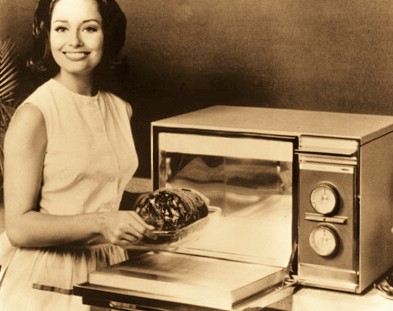
In 1945, Raytheon engineer and inventor Percy Spencer stood in front of a magnetrona radar componentand noticed a chocolate bar start to melt in his pocket. Curious about the magnetrons potential, Spencer obtained a bag of popcorn kernels and watched them pop next to the magnetron. The microwave oven was born.
Radarange, the worlds first microwave oven, was 6 feet tall, weighed 750 pounds, and cost around $5,000. It wasnt until 1967 that a popular countertop model costing $495 hit the market. Today, most Americans own much cheaper and more efficient models.
[SIZE=+3]22. Post-Its[/SIZE]

Image: Quirkyalone
After experimenting with adhesives, 3M scientist Dr. Spencer Silver found himself with a reusable, mildly sticky glue in 1968. Though he hadnt intended to create this specific substance, he tried promoting it within the company, as a spray or glue for temporary bulletin board notices. His efforts did not gain traction until fellow employee Art Fry attended one of Silvers presentations. Fry, frustrated that his bible hymnal bookmarks constantly fell out during church choir practice, realized that Silvers glue was the perfect bookmarking solution. Fry proposed the bookmark idea to management. Within five years, 3M introduced Post-it Notes. They have been indispensable to the modern office ever since.
[SIZE=+3]21. German chocolate cake[/SIZE]

Image: Stu Spivack/Flickr
In 1852, English chocolatemaker Samuel German created Bakers Germans Sweet Chocolate, the essential ingredient upon which the cakes name is based. A Texas homemaker sent a newspaper a recipe for Germans Chocolate Cake in 1957, popularizing the cake recipe. General Foods, owner of the Bakers Chocolate brand, forwarded the recipe to newspapers across the country in a push to increase chocolate sales. Somewhere along the line, newspapers dropped the s at the end of Germans, resulting in the German chocolate cake.
[SIZE=+3]20. Corn Flakes[/SIZE]

Image: Eplacencia
In the late 1800s, entrepreneur Will Keith Kellogg teamed up with his brother John, an MD and nutrition expert, research healthy diets for patients. While making bread one day, Will accidentally let the dough stand too long. As a result, the dough produced flakes when he rolled it for baking.
Feeling experimental, Will baked the flakes, creating a crunchy cereal that patients loved. Will refined the recipe with corn. He co-founded a cereal mail order company with Jon, then started the Battle Creek Toasted Corn Flakes Company, the first ready-to-eat cereal operation in the world. Kelloggs followed, and corn flakes remain a classic.
[SIZE=+3]19. WD-40[/SIZE]

Image: North Harvest Beangrowers
In 1953, three rocket scientists at San Diegos Rocket Chemical Company tried to develop a substance that would prevent corrosion in rockets by displacing water. They finally succeeded on their 40th try, naming the substance Water Displacer40th Attempt. More than 15 years later, Rocket company executive John S. Barry made the product a household name. Today, WD-40 resides is the lube of choice in as many as 80% of American households.
[SIZE=+3]18. Shopping cart[/SIZE]
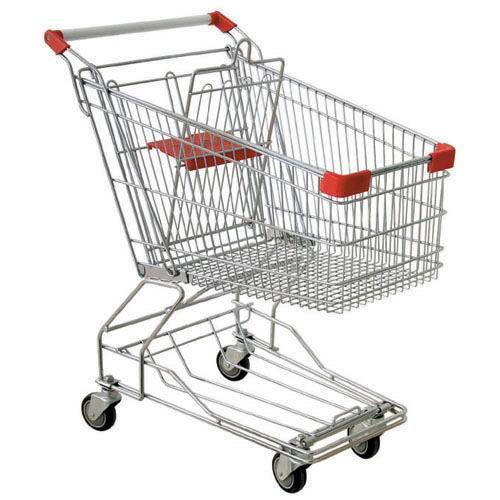
In the late 1930s, Oklahoma City grocery store owner Sylvan Goldman and an employee came up with a new way for shoppers to move larger amounts of groceries. At the time, customers lugged their goods in baskets, making for a heavy and difficult shopping experience. They patented the [ame="http://en.wikipedia.org/wiki/Shopping_cart"]Folding Basket Carriage for Self-Service Stores[/ame] in 1940.
To advertise the new invention, the store discouraged customers from carrying baskets. At first, people avoided them. However, after Goldman marketed them through demos and models, they caught on like wildfire. Todays shopping carts are a larger version of Goldmans invention.
[SIZE=+3]17. Penicillin[/SIZE]
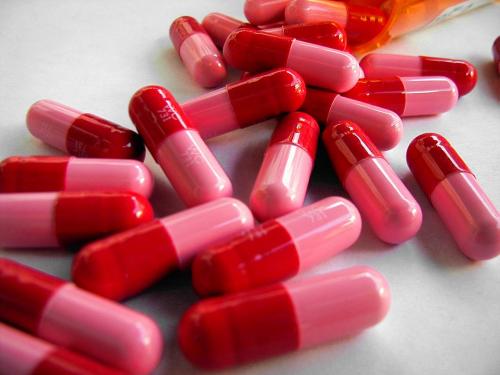
Dr. Alexander Fleming, as part of his bacterial research, was growing Staph cultures in his London lab when he decided to go on vacation. He failed to wash out one batch of bacteria before he left. Two weeks later, when he came back, he found his petri dish covered in mold. All the bacteria in the dish had died. Fleming had discovered Penicillin, entirely by accident.
[SIZE=+3]16. Teflon[/SIZE]
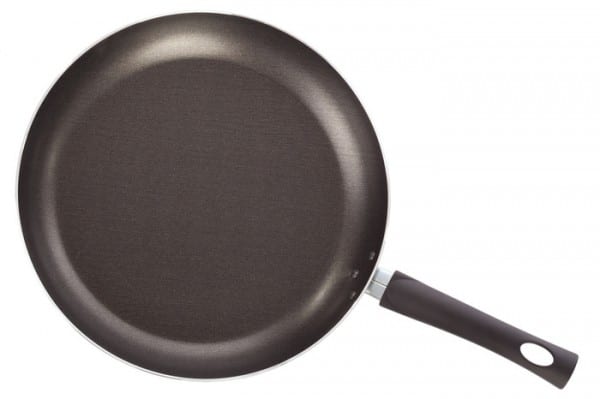
In 1938, chemist Roy Plunkett was researching refrigerants when perfluorethylene, one of his ingredients, polymerized inside a pressurized, iron-lined container. The iron had catalyzed the reaction, helping create an inert, low-friction seal. Plunketts company, Kinetic Chemicals (a DuPont-General Motors joint venture) patented the polymer in 1941. Four years later, it registered the Teflon trademark. The chemical continues to coat pans around the world.
[SIZE=+3]15. TNT[/SIZE]
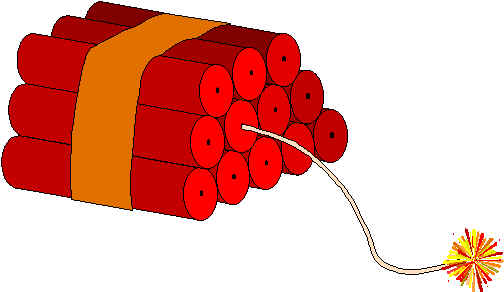
In 1863, Joseph Wilbrand discovered 2,4,6-trinitrotoluene. It took people 28 years to develop a high-velocity initiator to detonate the compound. The German army started using it as a shell filling in 1902. In 1914, during World War I, it became commonplace. People around the globe still explode it today.
[SIZE=+3]14. X-Rays[/SIZE]

Renowned German scientist Wilhelm Röntgen was experimenting with cathode rays in 1895 when he discovered the x-ray. Röntgen had covered his cathode tube with thick black paper. When he ran an electric current through the tube, a nearby fluorescent screen started glowing. The screen, coated in barium platinocyanide, stopped glowing when Röntgen turned off the current. He realized that a mysterious kind of ray must be making the screen glow. He codenamed the ray an X-ray, and proceeded to write books on it. His discovery earned him the first-ever Nobel Prize in physics.
[SIZE=+3]13. Bubble Gum[/SIZE]

Image: ImpactLab
In 1928, accountant Walter Diemer worked at a rubber company, but experimented with gum recipes on the side. One of his ingredient combinations was less sticky and stretchier than other gums. He discovered that it he could blow bubbles with it.
Excited by the new gums potential, Diemer brought two kilograms of it to a grocery store. It sold out in one afternoon. It didnt take long for bubble gum to catch on with kids; years later, in 1951, the Topps Company added a stick of it to their baseball card packages, replacing the old gift of a cigarette. It became an instant tradition.
[SIZE=+3]12. Velcro[/SIZE]

Image: Jim Ekstrom/Exeter Univ.
After a 1941 hunting trip, Swiss engineer George de Mestral and his dog were both covered in burdock burrs. De Mestral examined some of the burrs under a microscope. He found that their hook-shaped spikes would latch onto loops in fur, hair, or clothing, making them incredibly sticky. He realized that materials could be bound together in the same way, if the hooks and loops were constructed properly.
After years of experimentation, de Mestral found a way to make hooks and loops from nylon, then mechanize the process of weaving the hooks. Ten years after making his discovery, he submitted his hook/loop combo for a Swiss patent, which was granted in 1955. Worldwide patents and manufacturing plants followed, although it took more than a decade for Velcro to gain widespread acceptance.
[SIZE=+3]11. Gatorade[/SIZE]

Image: Nerd Fitness
In the early 1960s, University of Florida Gators football coach Ray Graves grew tired of watching his players grow tired in the tropical summer heat. When he asked his team doctor for help, the doctor inspired a research team to create a hydrating mixture of water, salt, sugar, lemon juice, potassium, and phosphate. Dubbed Gatorade, the drink supported the team during their first Orange Bowl win. Soon afterwards, researchers partnered with foodmaker Stokely-Van Camp to distribute the drink. Quaker later took over, helping the drink become an international sensation. The University of Florida, meanwhile, still receives royalties for Gatorade on an annual basis.
[SIZE=+3]10. Maybelline[/SIZE]
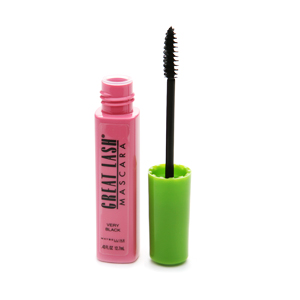
Before mascara was invented, women used to smear Vaseline and coal dust on their eyelashes. When American chemist T.L. Williams saw his sister doing this, he headed to his lab to create a more convenient product called Lash-Brow-Ine. Local women liked the mixture, but its name hardly rolled off the tongue. So he rebranded it Maybelline, a combination of his sister Maybels name and Vaseline. After Maybelline redefined modern mascara, it became a national cosmetics giant.
[SIZE=+3]9. Slinky[/SIZE]

Image: Lighten Up
In 1943, US Navy engineer Richard James was trying to develop a spring for ship instruments when he stumbled across the Slinky. He knocked a spring from a shelf and watched it step its way down to a pile of books, then a table, then to the floor. His wife Betty named the toy slinky, and a company was born.
In 1960, Richard, fed up with success, left the family to join a religious group in Bolivia. Betty continued to run the company until 1998.
[SIZE=+3]8. Silly Putty[/SIZE]

Image: DIYHappy
During World War II, the United States experienced a severe rubber shortage. As a result, the government funded scientists efforts to find a cheap rubber replacement. One such scientist, General Electrics James Wright, was working on a synthetic rubber substitute when he dropped boric acid into silicone oil. The stretchy, bouncy mass now known as Silly Putty resulted.
Wrights nutty putty made the scientific rounds, but nobody could find a use for it. Finally, in 1949, businessman Peter Hodgson ran across the stuff at a party. After buying production rights from GE, he dubbed the substance Silly Putty and repackaged it. A worldwide sensation ensued.
[SIZE=+3]7. Popsicle[/SIZE]

Image: Charlottes Fancy
11-year-old Frank Epperson left a stirring stick in a soft drink out on his porch one night in 1905. The next morning, when he discovered his accident, he found that record low temperatures left the pop frozen to the stick.
Epperson did nothing with his find until 1923, when he patented his Eppsicle ice pop. He changed the name to Popsicle when his kids started calling it that. After making the iced treat in a few different flavors, he sold production rights to New Yorks Joe Lowe Company, which gained it a wider audience. The Popsicle, now owned by Unilever, today comes in more than 30 flavors.
[SIZE=+3]6. Play-Doh[/SIZE]
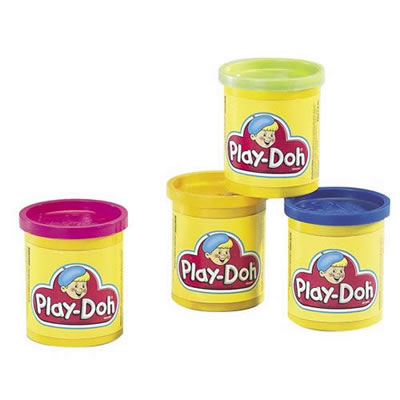
Play-Doh began life as Kutol brand wallpaper cleaner. Just when Kutol, a family business, was going broke in the early 1950s, a magazine published an article about using wallpaper cleaner to make Christmas ornaments. Employee Joe McVickers sister-in-law Kay tried making wallpaper cleaner ornaments with local schoolkids, and found that they loved it.
Her find inspired the owners to swap detergents for colorant in their cleaner, add a more pleasant smell, and renamed it Play-Doh. The new product first took off in schools around Cincinnati, then became the national sensation it is today.
[SIZE=+3]5. Potato Chips[/SIZE]
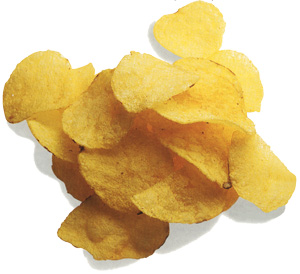
Image: North Carolina State U
In 1853, George Crum served as the head chef of New Yorks Moon Lake Lodge, famous for its French fries. When a customer sent back a plate of fries, complaining of their thick cut, Crum retaliated. He cut the potatoes as thin as he could, fried them in grease until they were crunchy, and sent them back.
Surprisingly, the guest was delighted. So many other guests requested the thin-fried potatoes that Crum named them Saratoga Chips. The chips became so popular that other people started imitating the recipe and trying to sell them as a snack food. By the early 1920s, grocers began selling them. In 1926, Laura Scudder put potato chips into bags; six years later, Herman Lay turned his Lays potato chips into the first national brand. Today, bagged potato chips are one of the countrys favorite snack foods.
[SIZE=+3]4. Saccharin[/SIZE]
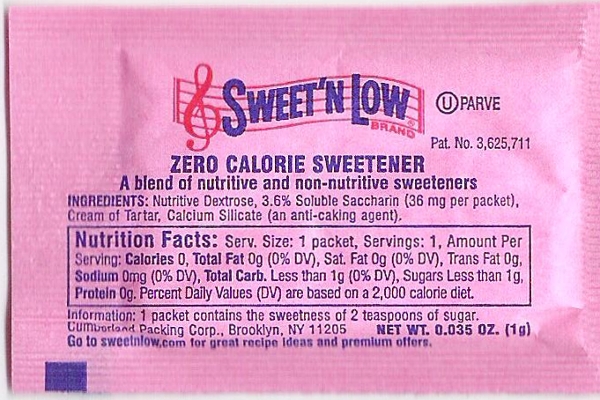
Johns Hopkins scientist Constantin Fahlberg discovered saccharin while experimenting on toluene derivatives, normally found in coal tar. When Fahlberg found that a residue from his experiments tasted sweet, he devoted more time to researching it. He later patented the substance and named it saccharin.
Saccharin was introduced as a food additive in the US in 1900. It gained more traction as a sugar substitute during WWI, when sugar was rationed. Now, it is most popularly known as Sweet N Low.
[SIZE=+3]3. Wheaties[/SIZE]
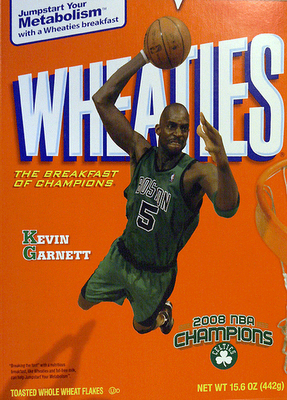
In 1922, a health clinician was preparing bran gruel for his patients when he accidentally spilled some onto a hot stovetop. The gruel hardened into flakes, which the clinician found tasted good. The clinician showed the flakes to the Washburn Crosby Company (now General Mills), which perfected and packaged them as Gold Medal Whole Wheat Flakes. The company renamed the flakes Wheaties after a public naming contest. Nine years later, General Mills began sponsoring baseball broadcasts, and Wheaties became the now-famous Breakfast of Champions.
[SIZE=+3]2. Scotch Guard[/SIZE]
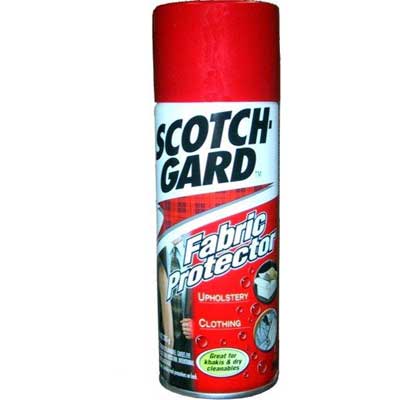
Scientist Patsy Sherman was working on inventing jet fuel line rubber for 3M in the early 1950s. One of her latex emulsions fell onto the flood, splashing a lab assistants shoes. Sherman and her team couldnt wash it offinstead, water and solvents would bead on the surface of the latex, then run off. Sherman started researching the latex as a fabric protectant. In 1955, Scotchguard, which protected fabrics from liquids, was released to the market.
[SIZE=+3]1. Kotex[/SIZE]

Image: Well.ca
During World War I, paper manufacturer Kimberly Clark sold the Army an ultra-absorbent bandage called Cellucotton. Military nurses also started using the absorbent bandage material as sanitary napkins. When the war ended, Kimberly Clark decided to market Cellucotton for precisely that purpose. Dubbed Kotexcotton + textilethe new product became the precursor of the modern maxi pad. Today, Kotex is one of Kimberly Clarks best-known brands.
Sources: Each source is linked in this blog post. We drew heavily on the Lemelson-MIT programs inventors list, which deserves special mention.